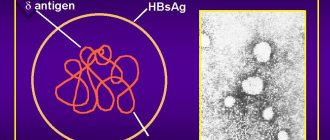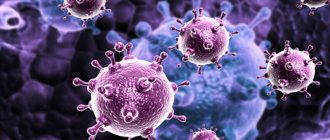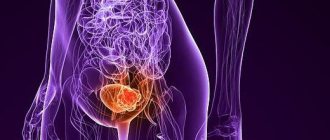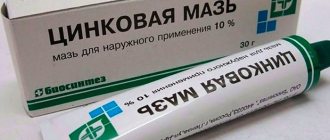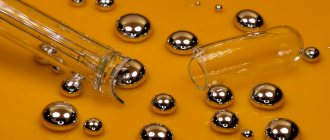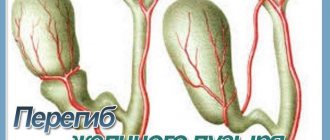The liver in our body is the most amazing and unpretentious organ. It performs more than 400 different functions, and is the main barrier between the blood coming from the intestines and all other organs. Hepatocyte cells process the incoming material, synthesize from it substances necessary for the entire body, remove and neutralize poisons and toxins.
Having a huge ability to regenerate, the liver is nevertheless susceptible to the destructive effects of harmful substances if they come in quantities that are difficult for it to cope with. In this case, inflammation of the liver develops - hepatitis, and hepatocyte cells partially die and are destroyed. What is toxic hepatitis, what factors cause it and how is this disease treated?
What is toxic hepatitis
Inflammation of the liver occurs for various reasons: bacterial and viral infections, fungal diseases and parasitic infestations, exposure to toxic substances. If the destruction of liver cells occurs under the influence of aggressive chemicals entering the body from the outside, then this disease is called toxic hepatitis. What it is?
effects of chemicals on the liver
- Acute toxic hepatitis develops as a result of exposure to a small amount of potent poison or weak irritants, but in large concentrations. As a rule, toxins enter through the gastrointestinal tract, less often through the respiratory tract and skin.
- Chronic hepatitis occurs due to repeated exposure to small doses of a toxin over a long period of time. Diseases related to hepatitis are coded according to ICD-10 under the number K71 (toxic liver damage). Alcoholic liver disease is separated into a separate group and has code K70.
Can toxic hepatitis be contagious? No, this is an exclusively therapeutic disease caused by the influence of an external chemical factor on a certain person. A group disease occurs only if all patients are simultaneously exposed to a toxin (food poisoning, industrial accidents).
Classification
According to the nature of the course, toxic hepatitis is divided into two types:
- Acute – develops in the first hours or days after exposure to poisons, has a rapid development and a severe course;
- Chronic – occurs a long time after the onset of exposure to poisons, develops slowly, and is relatively mild.
According to etiological factors, toxic hepatitis is divided into 4 groups:
- Toxic drug-induced hepatitis;
- Toxic alcoholic hepatitis;
- Hepatitis caused by industrial poisons;
- Hepatitis caused by naturally occurring poisons.
Based on the penetration of poisons into the human body, there are 3 groups of hepatitis:
- Intentional hepatitis;
- Random hepatitis;
- Occupational hepatitis.
Causes of toxic hepatitis
According to statistics, the most common cause of toxic hepatitis in Russia is alcohol abuse, as well as the subsequent uncontrolled use of medications to relieve a hangover.
Drug-induced toxic hepatitis develops as a result of a single dose of a large dose of drugs or long-term treatment, even under medical supervision. The most dangerous drugs for the liver include the following groups:
alcohol abuse
- antipyretics;
- anti-tuberculosis;
- sulfonamides;
- antiviral;
- anticonvulsants.
Separately, hepatitis can be distinguished after chemotherapy for cancer. Cytotoxic drugs used to suppress the growth of cancer cells have a negative effect on all organs and tissues, primarily on the liver. After chemotherapy, a blood test is required to monitor the state of biochemical processes in the liver. Depending on the results, diet and rehabilitation treatment are prescribed.
Another cause of toxic hepatitis is industrial poisons. This group of substances can poison the body both through the digestive tract and by contact with the skin or inhalation of polluted air. The main hepatotoxic substances used in modern industry are:
industrial poisons
- pesticides, including insecticides;
- chlorinated hydrocarbons (petroleum products);
- phenols;
- aldehydes;
- phosphorus;
- arsenic.
Another large group of toxins that have a destructive effect on the liver are poisons of plant origin:
- death cap;
- cross;
- heliotrope;
- bitter
Poisoning with plant poisons usually occurs as a result of improper collection of mushrooms or self-medication with herbal mixtures of unknown origin.
Diagnostics
First of all, the doctor collects an anamnesis. Based on the patient’s complaints, the suspected causes of the pathology and the presence of predisposing factors, the doctor determines a preliminary diagnosis. This is followed by examination and palpation of the patient. This determines the color of the skin and visible mucous membranes, the size and pain of the liver.
Laboratory tests include blood and urine tests, as well as microscopy of liver tissue:
- Blood biochemistry - liver tests (ALT, AST, total protein, total bilirubin and its fractions, alkaline phosphatase);
- General blood analysis;
- General urine analysis;
- Coagulogram;
- Examination of stool for the presence of toxins;
- Liver biopsy.
Among instrumental studies, ultrasound of the hepatobiliary zone is used.
Symptoms of acute and chronic toxic hepatitis
Symptoms of toxic hepatitis will vary slightly depending on the nature of the disease. In an acute course, the first signs usually appear after 2–4 days, less often after 12–24 hours (for example, in case of poisoning with toadstool).
Acute toxic hepatitis is accompanied by the following symptoms:
- fever;
- pain in the right hypochondrium;
- vomiting, lack of appetite, nausea;
- yellowness of the whites of the eyes;
- discolored stool;
- bleeding from the nose, gums, pinpoint hemorrhages on the skin;
- darkening of urine;
- sometimes nerve disorders resulting from exposure to toxins on the nervous system.
In the chronic course of the disease, signs may periodically appear and disappear:
- slight increase in body temperature (37.0–37.5 °C);
- discomfort in the right hypochondrium;
- bloating, diarrhea;
- bitterness in the mouth, nausea, vomiting;
- itching in the skin;
- increased fatigue.
The liver increases in size, blood tests reveal an increase in bilirubin and alkaline phosphatase, and the level of AST and ALT enzymes changes. It is necessary to conduct additional studies to exclude other forms of hepatitis, primarily infectious.
Symptoms
The clinical picture of an acute type of hepatitis includes the following manifestations:
Lethargy
- disturbances in the functioning of the digestive system;
- loss of orientation in space;
- spider veins and subcutaneous hemorrhages;
- change in the color of urine and feces, jaundice;
- overexcitation or lethargy;
- coma, hallucinations, dizziness;
- hormonal imbalance.
An enlargement of the spleen and liver, cytolysis of hepatocytes, and neutrophilic-type leukocytosis are also observed. The intensity of clinical symptoms depends on the type of toxic effect and the stage of the pathology. In the chronic form of hepatitis, there may be no signs. Manifestations are not specific.
Hepatitis is often diagnosed in pregnant women. In this case, severe liver failure develops gradually, so it is quite difficult to identify pathology at an early stage. The patient feels fine for a long period. People who are in her close circle can become infected. The list of possible complications includes:
- fetal death;
- cholestatic hepatitis, accompanied by disruptions in the blood clotting process;
- bleeding in the early postpartum period.
Bleeding
The development of the chronic form of toxic hepatitis begins with general malaise, increased fatigue and fever. Subsequently, the patient develops a mental disorder and pain syndrome. Disturbances in the functioning of the central nervous system are a reason for an immediate visit to the attending physician. In the absence of medical care, the risk of irreversible consequences increases. These include liver necrosis, which is accompanied by coma and massive bleeding.
Treatment of toxic hepatitis
Treatment of toxic hepatitis consists of removing poison from the body as quickly as possible, symptomatic therapy and creating optimal conditions for liver regeneration. For this purpose, hepatoprotective substances are used. As a rule, these are vitamins, enzymes and herbal products.
- Pharmacy hepatoprotectors: “Liv 52”, “Essentiale”, “Heptral”. These drugs promote the production of necessary phospholipids, activate the synthesis of amino acids, and have a choleretic and anti-inflammatory effect. They are taken in long courses from 1 to 6 months.
- B vitamins and ascorbic acid.
- Means that enhance the secretion of bile - “Cholenzim”, “Holosas”.
Treatment of toxic hepatitis with folk remedies
Treatment of toxic hepatitis with folk remedies can only be used under the supervision of a physician. Help relieve nausea and normalize liver function:
- juice from sauerkraut;
- mint infusion;
- grapefruit juice;
- infusion of horseradish roots;
- calendula decoction;
- pumpkin juice and pulp.
Diet plays a huge role in the treatment of liver diseases. It is the main stimulus for regeneration, since it allows you to eliminate the effects of unfavorable factors and create conditions for rapid recovery, providing the liver with all the necessary substances. You should also minimize the intake of all medications. There is a saying: “The best pill for the liver is no pill at all,” and it’s close to the truth!
How dangerous is the disease?
The main harm of the toxic type of hepatitis is incurable and life-threatening complications. The most likely of them:
- Liver failure. When most of the cells of an organ are destroyed and replaced by fat cells, digestive and enzyme-forming functions are disrupted. The patient suffers from edema, weight loss, as well as pathologies of the nervous system leading to coma.
- Cirrhosis. With this disease, there is a gradual death of liver cells, as well as their subsequent replacement by scar tissue. If the development of cirrhosis is not stopped in time, it can lead to death.
Diet for toxic liver hepatitis
What diet should you follow for toxic liver hepatitis? Avoid all foods that are difficult to digest:
- fatty meat (pork, lamb, duck), lard;
- fatty fish;
- eggs;
- canned food;
- mushrooms;
- smoked meats;
- seasonings and sauces;
- pastries and fresh bread;
- strong tea, coffee, cocoa;
- sparkling water;
- nuts;
- onions, garlic, radish, sorrel;
- confectionery, ice cream;
- fatty varieties of cheese and cottage cheese, sour cream, butter.
Alcohol and nicotine are strictly prohibited!
You can’t eat fatty, spicy, fried foods. Food is steamed, baked or boiled.
The daily diet must include:
- porridge;
- dried bread;
- bran;
- chicken, veal;
- lean varieties of fish;
- milk and low-fat cottage cheese;
- vegetables and fruits.
It is also useful to drink green tea, a decoction of dried fruits, and eat figs and green vegetables.
Nutrition for toxic hepatitis should be taken in small portions, 5–6 times a day. It is advisable to adhere to the principle of separate nutrition: do not mix protein and carbohydrate foods in one meal, and eat fruits separately from everything else.
Features of diet No. 5
Gradually, liver cells restore their function. Therefore, doctors will allow patients with toxic hepatitis more and more familiar foods. The menu should remain balanced in proteins and carbohydrates, but with a minimum amount of animal fats.
So, you should prepare pureed soups every day - vegetable, fish, fruit, but with low-fat broth, second broth, or without meat at all. Dressing with sauteed vegetables for soups is prohibited. Second courses of beef, ham, as well as fish - pike perch, bream or cod, hake are already acceptable. They are cooked in a double boiler or baked in the oven.
Dishes made from cottage cheese are allowed - casseroles, soufflés, as well as cheesecakes and even lazy dumplings. Cheese can be consumed, but not the spicy varieties. Not only porridges are prepared from vermicelli or pasta, but also soups and puddings. From eggs - steam omelettes. They are included in the menu whole, for example, after cooking, but not more than 1-2 pieces. in Week.
For baked goods, it is still better to give preference to day-old bread and crackers, but sometimes you can afford a bun or cheesecake. Almost all vegetables are allowed, but after heat treatment and chopping - as a main dish or side dish. To improve the taste of dishes, use dill, parsley or bay leaves. Among sweets, honey, marmalade or marshmallow, and berry jelly can be included in the diet.
Forecast
In general, with timely diagnosis and proper treatment, the prognosis is favorable. The liver has an exceptional ability to regenerate and easily restores up to 75% of dead cells.
An unfavorable outcome may result from acute injury from a large dose of poison and a delay in medical care (for example, the venom of the toadstool causes the first signs of poisoning to appear after the liver has been exposed to it).
Chronic toxic hepatitis can be complicated by cirrhosis of the liver - the replacement of functional hepatocyte cells with scar tissue. As a rule, this occurs as a result of constant exposure to toxins on the liver, when the poison prevents the cells from recovering normally, for example, when drinking alcohol.
Toxic hepatitis is a non-contagious liver disease that occurs as a result of poisoning the body with chemicals: alcohol, drugs, plant poisons and industrial toxins. The disease is accompanied by pain in the right hypochondrium, nausea, indigestion, and fever. When treating toxic hepatitis, it is important to exclude exposure to a destructive factor, quickly remove the poison from the body and create favorable conditions for liver restoration. To do this, take hepatoprotective medications and follow a gentle diet.
Stages
| Latent period | It begins with the entry of toxic substances into the body and continues until symptoms appear. |
| Stage of acute clinical manifestations | The following signs of toxic liver damage appear: jaundice, fever, weight loss, weakness and loss of appetite, dyspeptic disorders. At this stage, damage to vital organs is typical. |
| Exit stage | This is the interval from the most developed clinical picture to recovery or death. |
Complications
A mild form of the disease can be treated quite easily. As for more severe and advanced forms, hepatitis can cause the following complications:
- liver failure, which disrupts the normal functioning of this organ;
- damage to the central nervous system, which leads to periodic convulsions and loss of consciousness;
- cirrhosis of the liver, which most often leads to death.
Complications of the disease lead to very serious consequences. Therefore, it is very important to stop the destructive effect on the liver in time.
